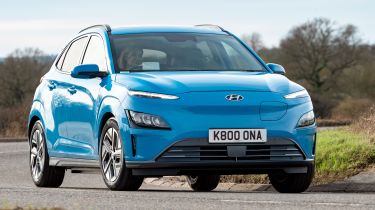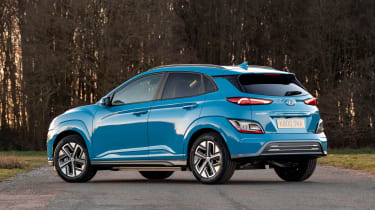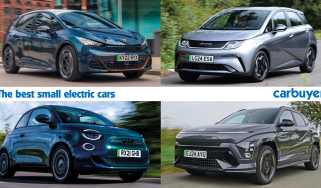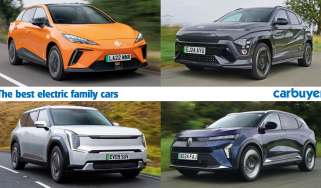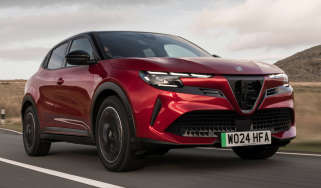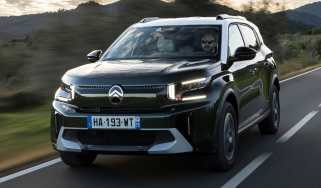Hyundai Kona Electric - Electric motor, drive & performance (2019-2023)
It has no shortage of pace, but the Kona Electric won't convert sports-car fans
Hyundai Kona Electric - electric motor
Electric motors deliver their power differently to petrol or diesel engines. To some extent, it's not the 134bhp of the 39kWh Kona or the 201bhp of the 64kWh version that shapes the way it drives, but the fact that power is available as soon as you touch the accelerator.
The quoted 0-62mph time is a clear measure of the performance potential that the 64kWh Hyundai Kona Electric has to offer. However, while Hyundai says it'll reach that speed from rest in just 7.9 seconds, it doesn't feel exhilarating in the way a hot hatchback does. Instead, it offers plentiful, constant and instant urge from the moment you put your foot down to the point at which you pull up to a halt. Only at motorway speeds does it feel a little less urgent.
Once drive is selected, there's little else to do but accelerate, steer and brake, which makes for a very relaxing driving experience, if not an especially exciting one. The Kona Electric starts in Eco mode, which reduces throttle response to improve efficiency. Unless you're about to overtake someone, there's little reason to select Normal or Sport; while the latter offers all the electric motor's power, the car doesn’t feel hugely comfortable dealing with the full 201bhp.
The regular Kona doesn't exactly feel full of life – its responses and handling do little to reward the enthusiastic driver – and the Kona Electric is further hampered by its considerable 1.7-tonne weight. It can't deliver the same entertainment as the Mazda MX-30 or petrol and diesel rivals such as the Ford Puma and SEAT Arona.
This will be of little worry to many buyers, though, who'll instead revel in the Kona's quietness, simplicity and ease of use.
Which Is Best?
Cheapest
- Name160kW Advance 65kWh 5dr Auto
- Gearbox typeAuto
- RRP£34,990
Most Economical
- Name160kW Advance 65kWh 5dr Auto [Comfort Pack]
- Gearbox typeAuto
- RRP£35,590
Fastest
- Name160kW Advance 65kWh 5dr Auto
- Gearbox typeAuto
- RRP£34,990

